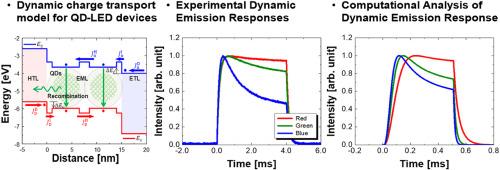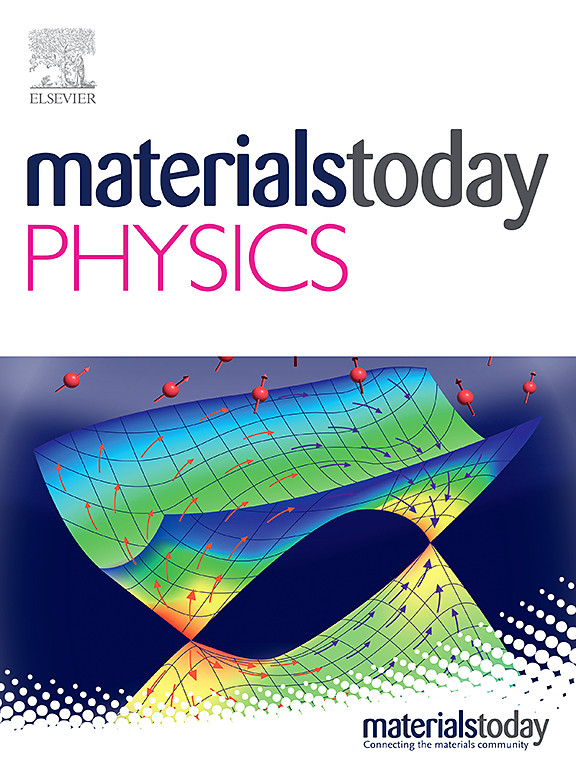Charge transport dynamics and emission response in quantum-dot light-emitting diodes for next-generation high-speed displays
Abstract
Inorganic quantum-dot light-emitting diodes (QD-LEDs) have gained significant attention as optoelectronic devices for next-generation display systems due to their superior colour properties. A comprehensive understanding of the charge transport dynamics and transient emission responses of the QD-LED is crucial to achieving high motion picture quality next-generation QD-LED display systems. In this study, we investigated the transient emission response of QD-LED devices through an advanced charge transport simulation model tailored to the quantum-dots (QDs). The dynamic response of the QD-LED devices is evaluated using the time-resolved electroluminescence measurement method for both cadmium-based and cadmium-free red, green, and blue QD-LEDs. The QD-LED devices exhibit notable emission drops during pulse voltage application. The charge transport simulation quantitatively reveals that the on and off switching speeds and the emission drops are intricately influenced by the electron and hole injection balance and a combination of carrier recombination factors within the QD layer. The charge transport simulation also shows that space-charge accumulation, due to the combined effects of charge imbalance and Auger recombination, quantitatively explains a potential device degradation mechanism. Therefore, the QD-specified charge transport model provides a crucial approach in designing and optimizing QD-LED devices for next-generation high-speed QD-LED displays with ultimate colour quality and long lifetimes.


 求助内容:
求助内容: 应助结果提醒方式:
应助结果提醒方式:


